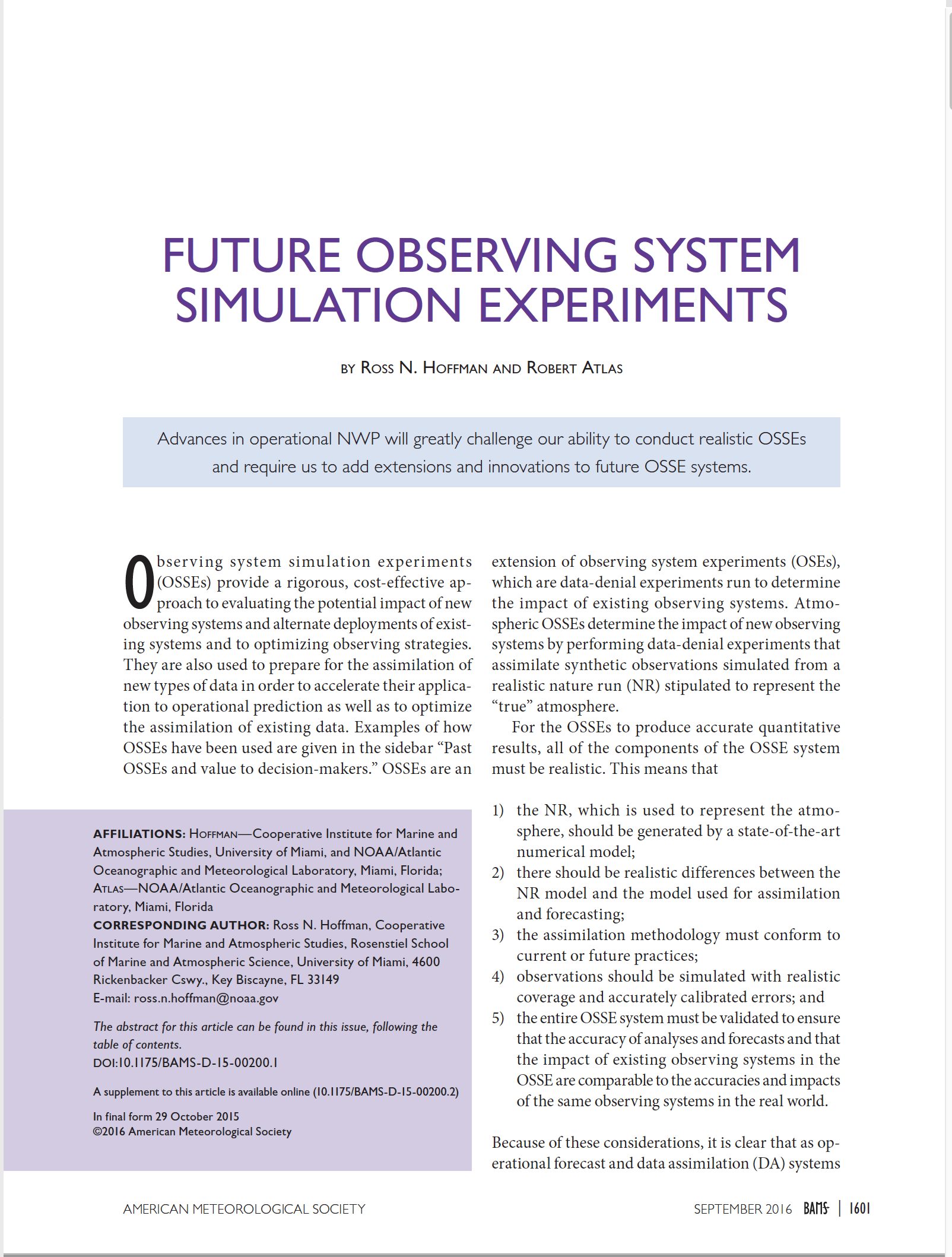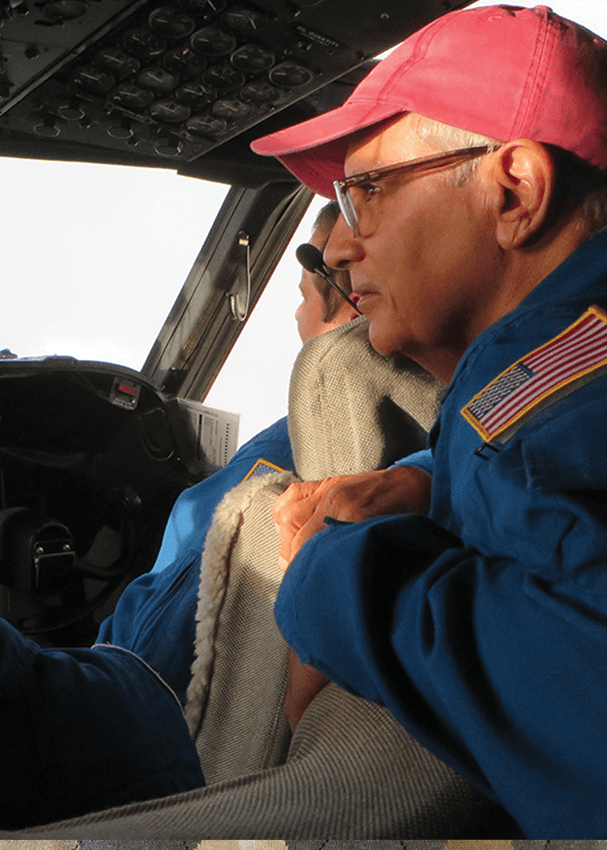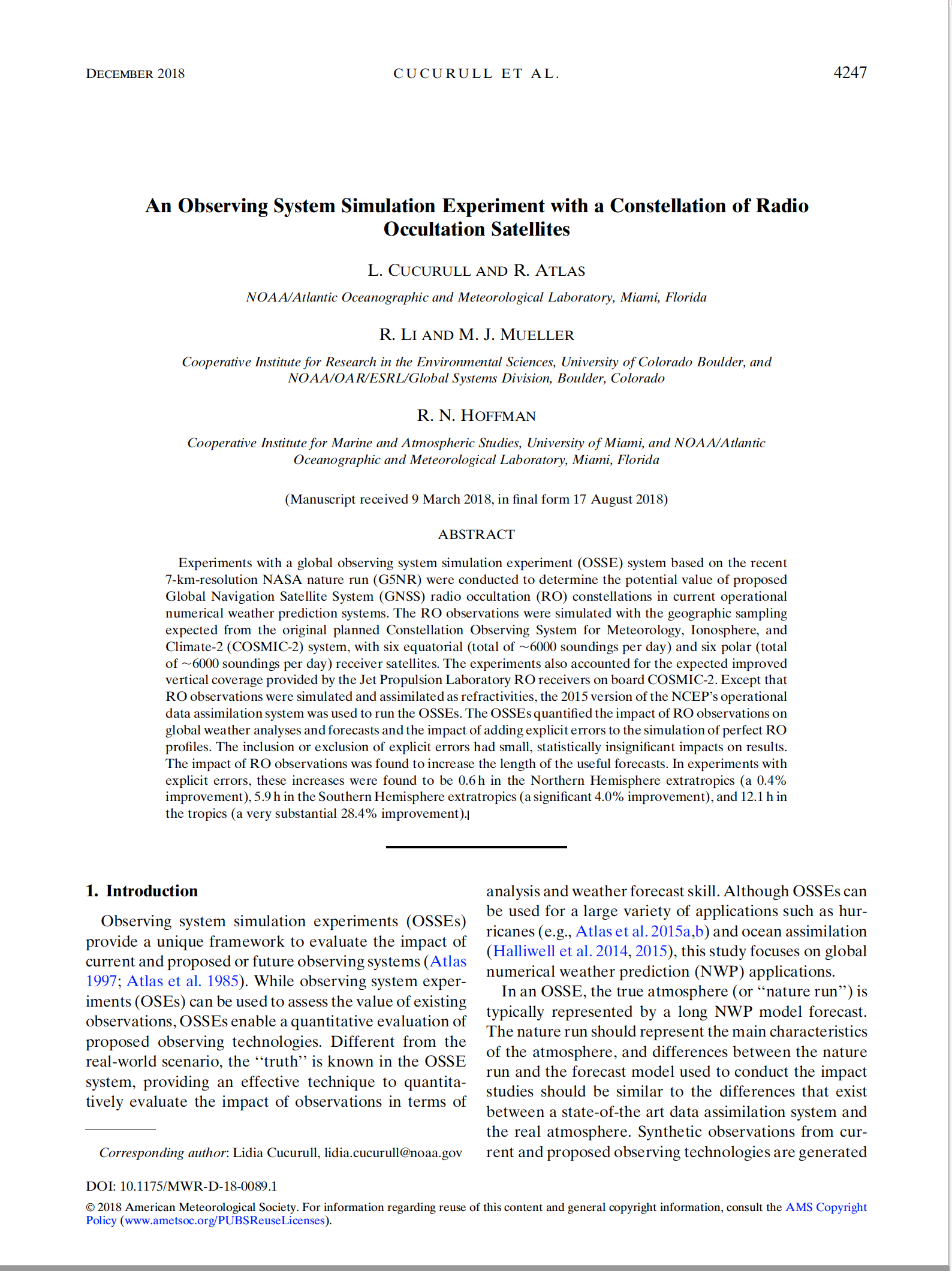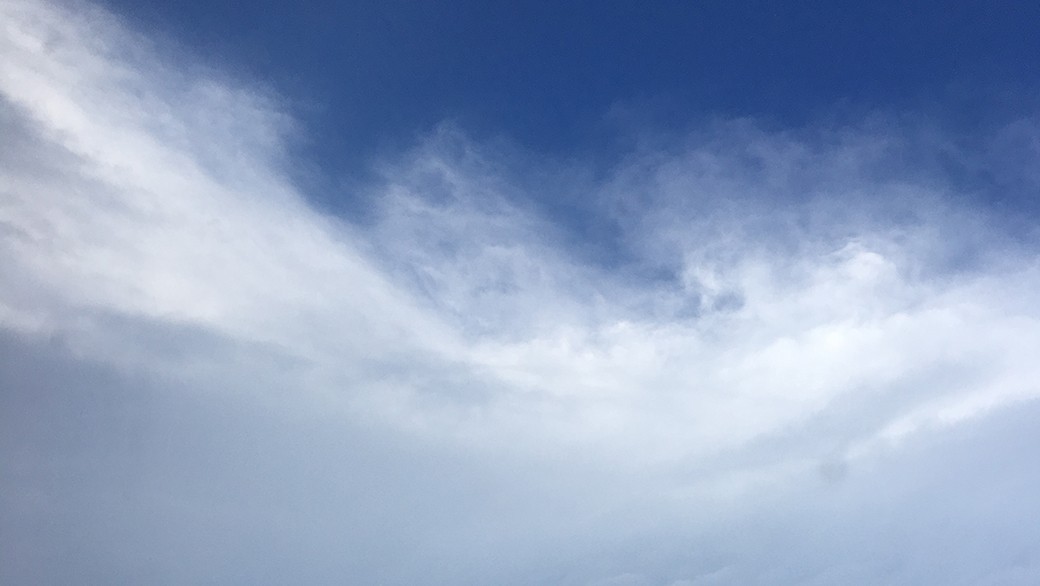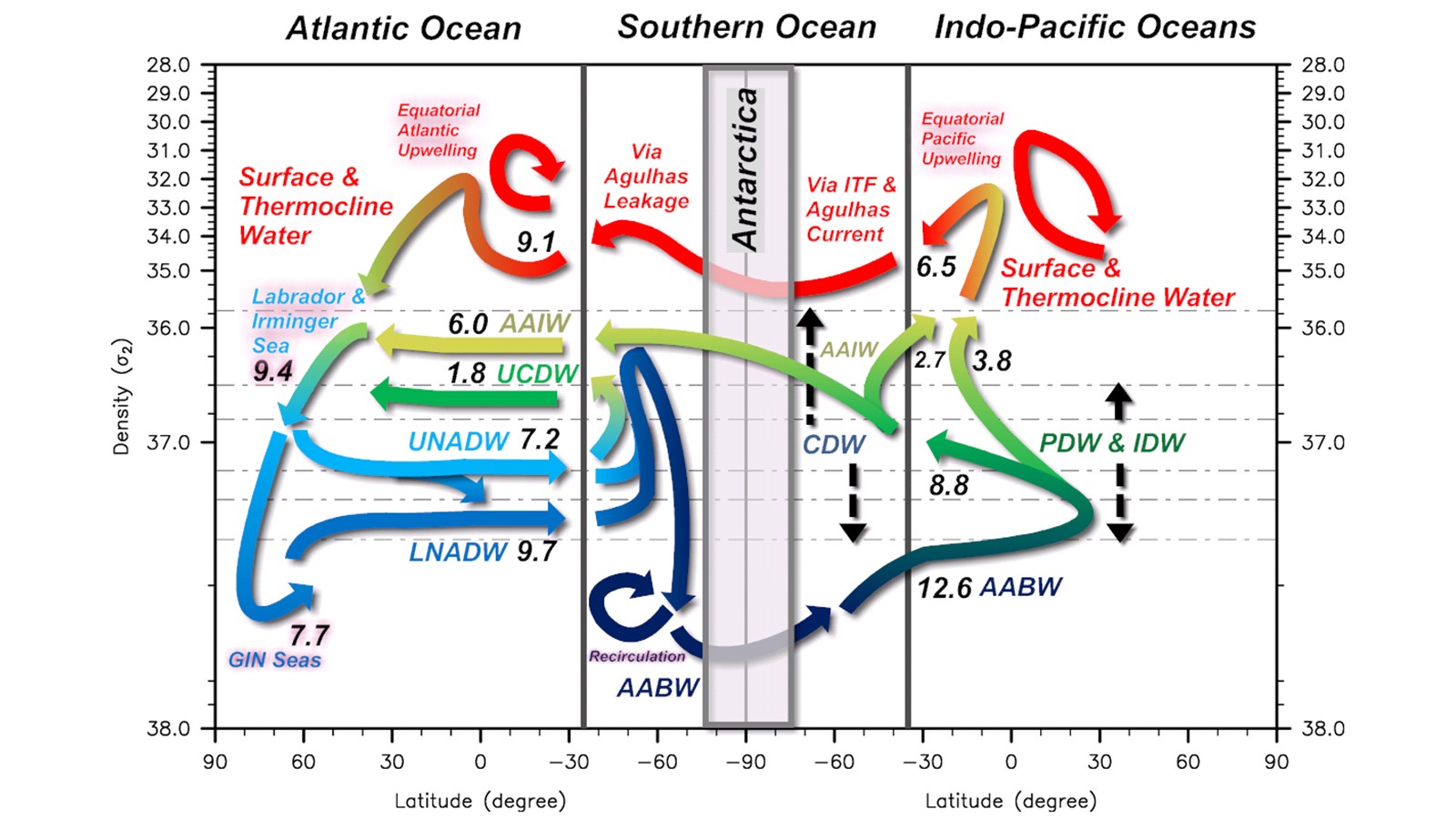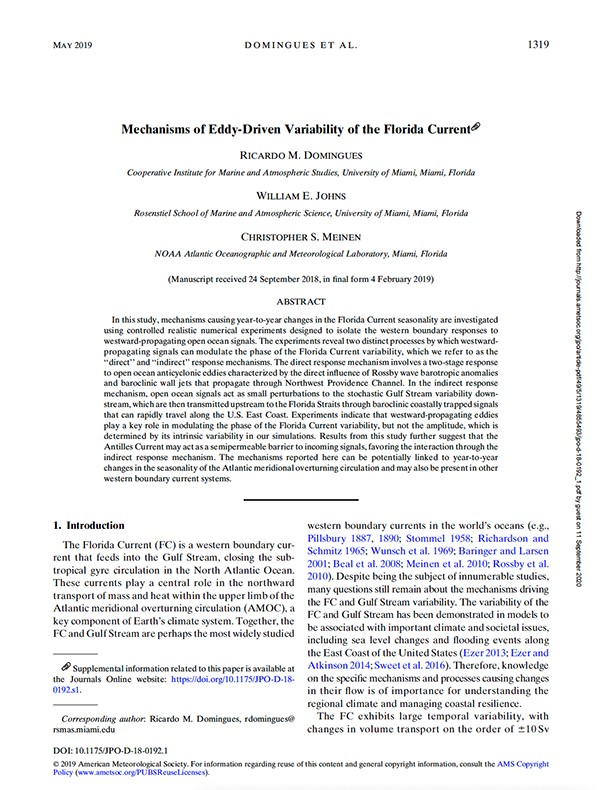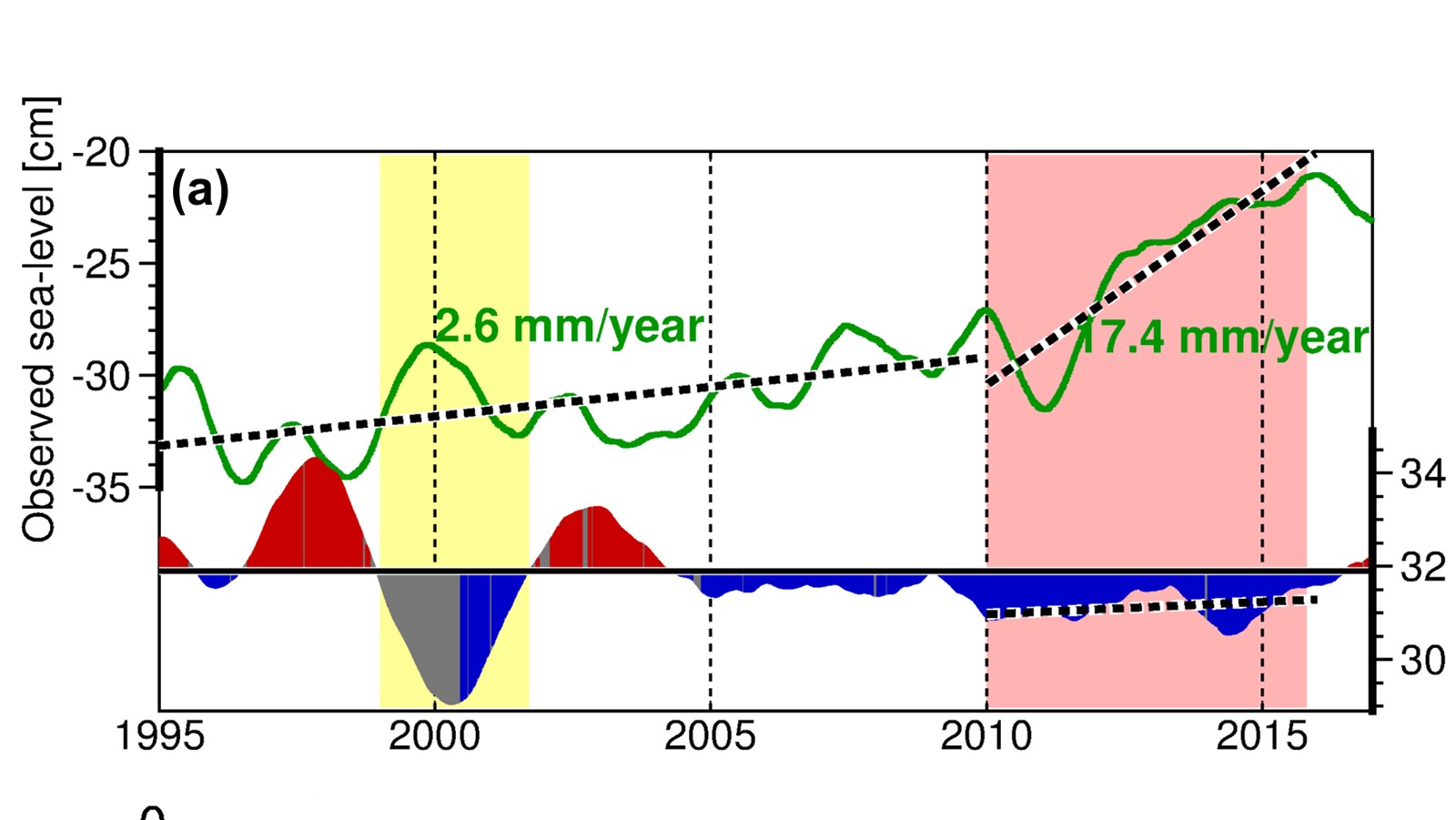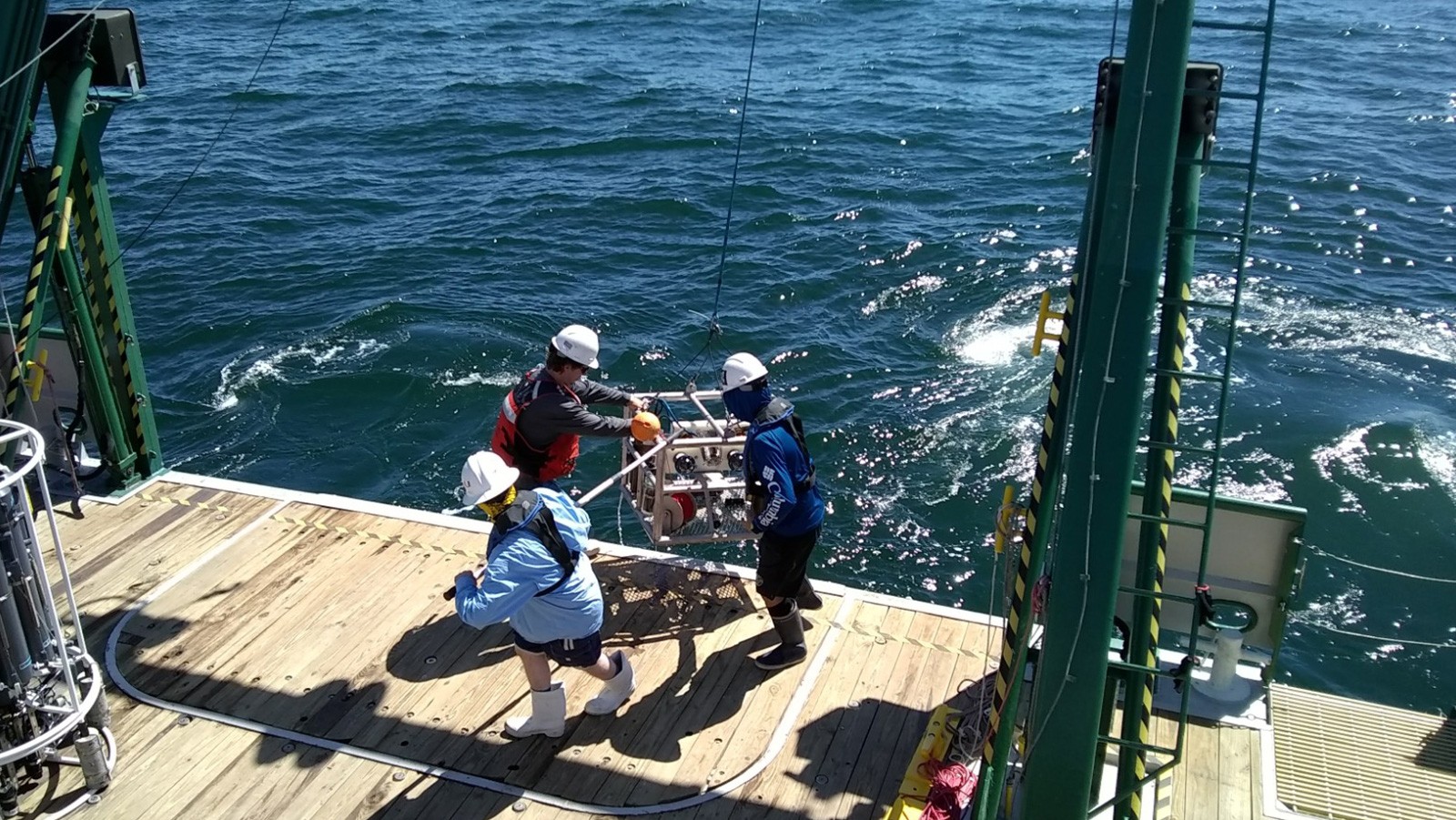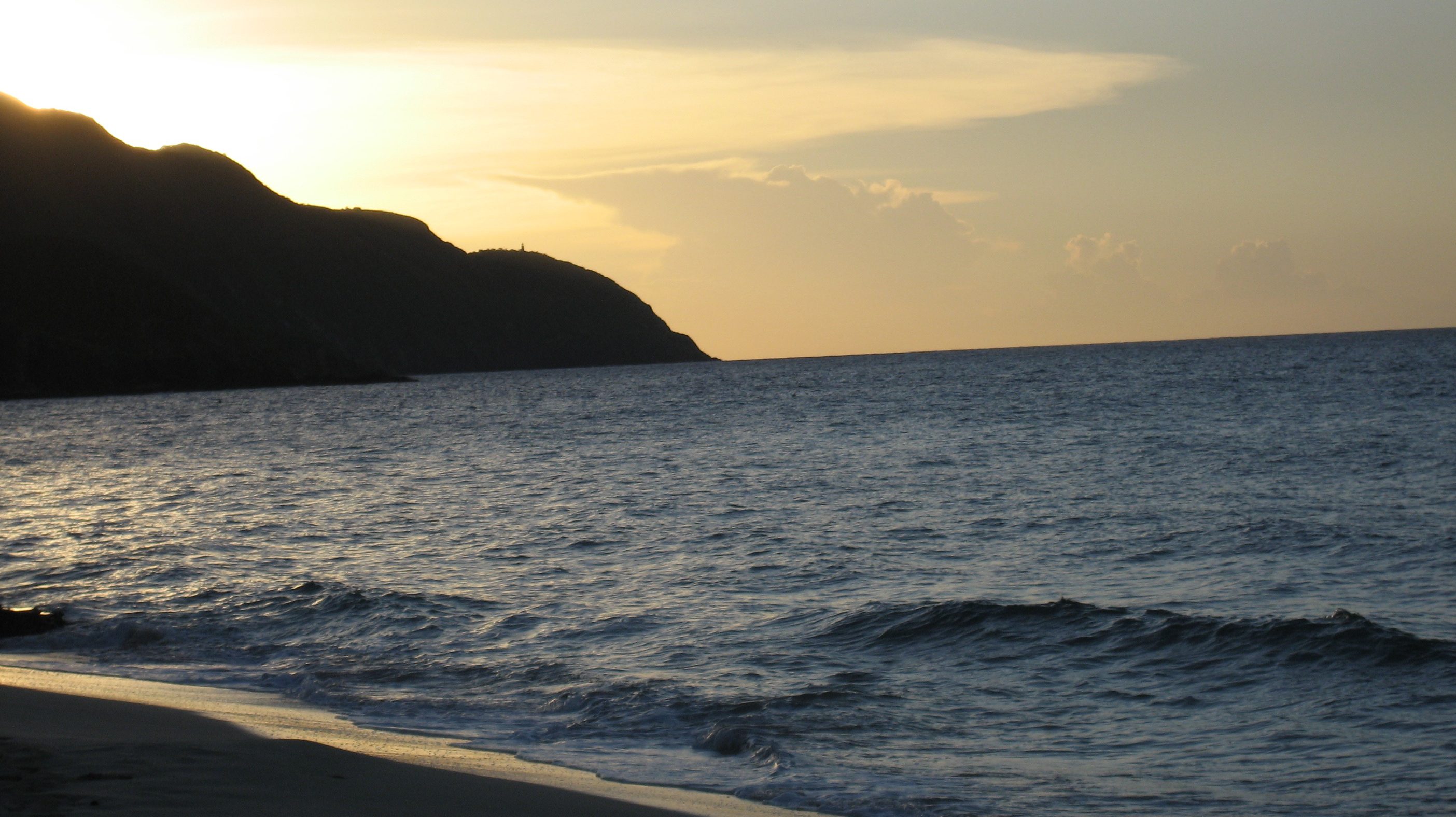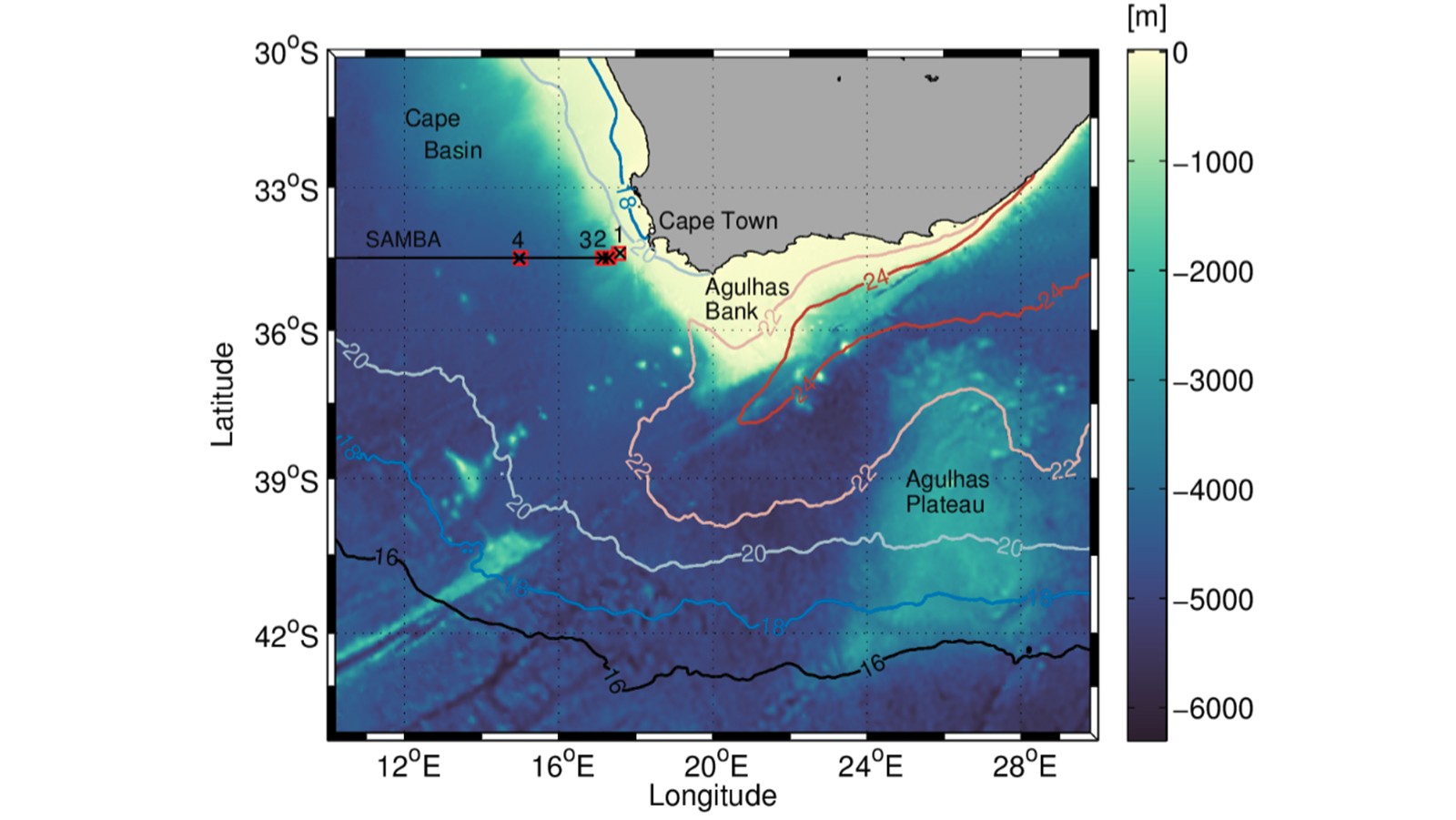Future Observing System Simulation Experiments
Hoffman, R. N., & Atlas, R. (2016). Future observing system simulation experiments. Bulletin of the American Meteorological Society, 97(9), 1601-1616.
Abstract: An additional set of challenges will arise when future DA systems strongly couple the different Earth system components. As operational forecast and data assimilation (DA) systems evolve, observing system simulation experiment (OSSE) systems must evolve in parallel. Expected development of operational systems—especially the use of data that are currently not used or are just beginning to be used, such as all-sky and surface-affected microwave radiances—will greatly challenge our ability to construct realistic OSSE systems.In response, future OSSE systems will require coupled models to simulate nature and coupled observation simulators. The requirements for future evolving OSSE systems and potential solutions to satisfy these requirements are discussed. It is anticipated that in the future the OSSE technique will be applied to…
